Details
Robert Delaunay (1885-1941)
Rythme sans fin
huile sur toile
150.3 x 45.2 cm.
Peint en 1933.
oil on canvas
59 1⁄8 x 17 3⁄4 in.
Painted in 1933.
Provenance
Sonia Delaunay, Paris (don de l'artiste et jusqu'à au moins 1956).
Jacques Damase, Paris (avant 1973).
Acquis auprès de celui-ci par le propriétaire actuel vers 1998.
Literature
G. Habasque, Robert Delaunay Du cubisme à l'art abstrait, Paris, 1957, p. 297, no. 289.
Exhibited
Bâle, Galerie Beyeler, Robert Delaunay 1956, no. 27.
Leverkusen, Sta¨dtisches Museum Morsbroich (juin-juillet) ; Fribourg-en-Brisgau, Kunstverein (juillet-août), R. Delaunay, 1956, no. 66.
Hambourg, Kunstverein (janvier-mars) ; Cologne, Wallraf-Richartz-Museum (mars-mai) ; et Francfort, Kunstverein (mai-juin), Robert Delaunay 1962, no. 56 (illustré au catalogue d'exposition).
Bruxelles, Galerie Jacques Damase, Robert Delaunay 1973, p. 23, no. 23 (illustré au catalogue d'exposition).
Lisbonne, Fundac¸a~o Calouste Gulbenkian, Robert e Sonia Delaunay janvier-février 1982, no. 35 (illustré au catalogue d'exposition).
Madrid, Fundación Juan March, Robert y Sonia Delaunay avril-mai 1982, p. 60, no. 56.
Special Notice
This item will be transferred to an offsite warehouse after the sale. Please refer to department for information about storage charges and collection
details.
Post Lot Text
Dans les années 1930, Robert Delaunay qui était alors retourné à la figuration depuis l’éclatement de la Première Guerre mondiale, abandonne quasi définitivement cette peinture figurative pour une peinture exclusivement et rigoureusement abstraite. L’artiste renoue avec ses abstractions "orphistes" révolutionnaires du début des années 1910 et s’attaque à nouveau au problème des formes circulaires, qu’il reprend avec une technique perfectionnée et au dynamisme accru. Dans ses séries des Joies de vivre puis des Rythmes sans fin, il agence les couleurs dans un sens giratoire. Ses demi-cercles, fondés sur la décomposition de la lumière, s’enchaînent et s’interpénètrent créant un effet de profondeur inouï. La rigueur de l’agencement des formes, la précision des contours, l’absence de dégradé constituent le point extrême atteint par Robert Delaunay dans le sens du dépouillement et feront l’admiration des puristes, des constructivistes et des membres du mouvement De Stijl.
Le format insolite, étiré en hauteur, de cette toile ainsi que le titre Rythme sans fin, traduisent le fait que l’artiste remettait en question le concept traditionnel de la peinture de chevalet : « la notion d’univers limité – dit-il – a conduit à la négation du tableau enfermé dans le cadre pour lui substituer le tableau continuant indéfiniment au dehors comme au-dedans ».
Cette toile fait partie d’une série de cinq ou six œuvres peintes dans ce format sur ce même thème. Réalisées en 1933, toutes portent le titre de Rythme sans fin, et aboutirent aux grands panneaux réalisés par Delaunay pour le Palais des Chemins de Fer de l’Exposition Internationale de Paris en 1937. Ces œuvres témoignent donc également de l’intérêt de l’artiste pour les peintures murales
In the 1930s, Robert Delaunay who had returned to figurative painting since the outbreak of the First World War, almost definitively abandoned figurative painting for exclusively and rigorously abstract painting. The artist resumed his revolutionary “Orphist” abstractions of the early 1910s and once again confronted the question of circular forms, which he took up with a perfected technique and increased dynamism. In his Joies de vivre and Rythmes sans fin series, he combined colours in a kind of rotational motion. His semicircles, based on the decomposition of light, follow one another and intersect, creating an unprecedented effect of depth. The rigorous arrangement of shapes, the precise contours and the absence of gradations represent the pinnacle of Robert Delaunay’s sense of simplicity and were admired by the purists, constructivists and members of the De Stijl movement.
The unusual, up-stretched format of this painting, as well as that title, Rythme sans fin, reflect the fact that the artist was challenging the traditional concept of easel painting: “the notion of a limited universe,‘he stated’,has led to the negation of the painting enclosed in the frame and to the substitution of the painting continuing indefinitely outside as well as inside.”
This painting is part of a series of five or six works painted in this format on the same theme. Painted in 1933, they all bear the title Rythme sans fin, and led to the large panels Delaunay made for the Palais des Chemins de Fer at the Exposition Internationale de Paris in 1937. These works therefore also reflect the artist’s interest in murals.
Details
Robert Delaunay (1885-1941)
Rythme sans fin
huile sur toile
150.3 x 45.2 cm.
Peint en 1933.
oil on canvas
59 1⁄8 x 17 3⁄4 in.
Painted in 1933.
Provenance
Sonia Delaunay, Paris (don de l'artiste et jusqu'à au moins 1956).
Jacques Damase, Paris (avant 1973).
Acquis auprès de celui-ci par le propriétaire actuel vers 1998.
Literature
G. Habasque, Robert Delaunay Du cubisme à l'art abstrait, Paris, 1957, p. 297, no. 289.
Exhibited
Bâle, Galerie Beyeler, Robert Delaunay 1956, no. 27.
Leverkusen, Sta¨dtisches Museum Morsbroich (juin-juillet) ; Fribourg-en-Brisgau, Kunstverein (juillet-août), R. Delaunay, 1956, no. 66.
Hambourg, Kunstverein (janvier-mars) ; Cologne, Wallraf-Richartz-Museum (mars-mai) ; et Francfort, Kunstverein (mai-juin), Robert Delaunay 1962, no. 56 (illustré au catalogue d'exposition).
Bruxelles, Galerie Jacques Damase, Robert Delaunay 1973, p. 23, no. 23 (illustré au catalogue d'exposition).
Lisbonne, Fundac¸a~o Calouste Gulbenkian, Robert e Sonia Delaunay janvier-février 1982, no. 35 (illustré au catalogue d'exposition).
Madrid, Fundación Juan March, Robert y Sonia Delaunay avril-mai 1982, p. 60, no. 56.
Special Notice
This item will be transferred to an offsite warehouse after the sale. Please refer to department for information about storage charges and collection
details.
Post Lot Text
Dans les années 1930, Robert Delaunay qui était alors retourné à la figuration depuis l’éclatement de la Première Guerre mondiale, abandonne quasi définitivement cette peinture figurative pour une peinture exclusivement et rigoureusement abstraite. L’artiste renoue avec ses abstractions "orphistes" révolutionnaires du début des années 1910 et s’attaque à nouveau au problème des formes circulaires, qu’il reprend avec une technique perfectionnée et au dynamisme accru. Dans ses séries des Joies de vivre puis des Rythmes sans fin, il agence les couleurs dans un sens giratoire. Ses demi-cercles, fondés sur la décomposition de la lumière, s’enchaînent et s’interpénètrent créant un effet de profondeur inouï. La rigueur de l’agencement des formes, la précision des contours, l’absence de dégradé constituent le point extrême atteint par Robert Delaunay dans le sens du dépouillement et feront l’admiration des puristes, des constructivistes et des membres du mouvement De Stijl.
Le format insolite, étiré en hauteur, de cette toile ainsi que le titre Rythme sans fin, traduisent le fait que l’artiste remettait en question le concept traditionnel de la peinture de chevalet : « la notion d’univers limité – dit-il – a conduit à la négation du tableau enfermé dans le cadre pour lui substituer le tableau continuant indéfiniment au dehors comme au-dedans ».
Cette toile fait partie d’une série de cinq ou six œuvres peintes dans ce format sur ce même thème. Réalisées en 1933, toutes portent le titre de Rythme sans fin, et aboutirent aux grands panneaux réalisés par Delaunay pour le Palais des Chemins de Fer de l’Exposition Internationale de Paris en 1937. Ces œuvres témoignent donc également de l’intérêt de l’artiste pour les peintures murales
In the 1930s, Robert Delaunay who had returned to figurative painting since the outbreak of the First World War, almost definitively abandoned figurative painting for exclusively and rigorously abstract painting. The artist resumed his revolutionary “Orphist” abstractions of the early 1910s and once again confronted the question of circular forms, which he took up with a perfected technique and increased dynamism. In his Joies de vivre and Rythmes sans fin series, he combined colours in a kind of rotational motion. His semicircles, based on the decomposition of light, follow one another and intersect, creating an unprecedented effect of depth. The rigorous arrangement of shapes, the precise contours and the absence of gradations represent the pinnacle of Robert Delaunay’s sense of simplicity and were admired by the purists, constructivists and members of the De Stijl movement.
The unusual, up-stretched format of this painting, as well as that title, Rythme sans fin, reflect the fact that the artist was challenging the traditional concept of easel painting: “the notion of a limited universe,‘he stated’,has led to the negation of the painting enclosed in the frame and to the substitution of the painting continuing indefinitely outside as well as inside.”
This painting is part of a series of five or six works painted in this format on the same theme. Painted in 1933, they all bear the title Rythme sans fin, and led to the large panels Delaunay made for the Palais des Chemins de Fer at the Exposition Internationale de Paris in 1937. These works therefore also reflect the artist’s interest in murals.
.jpg)
.jpg)
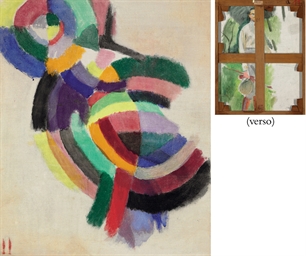
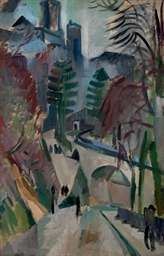
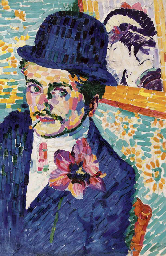
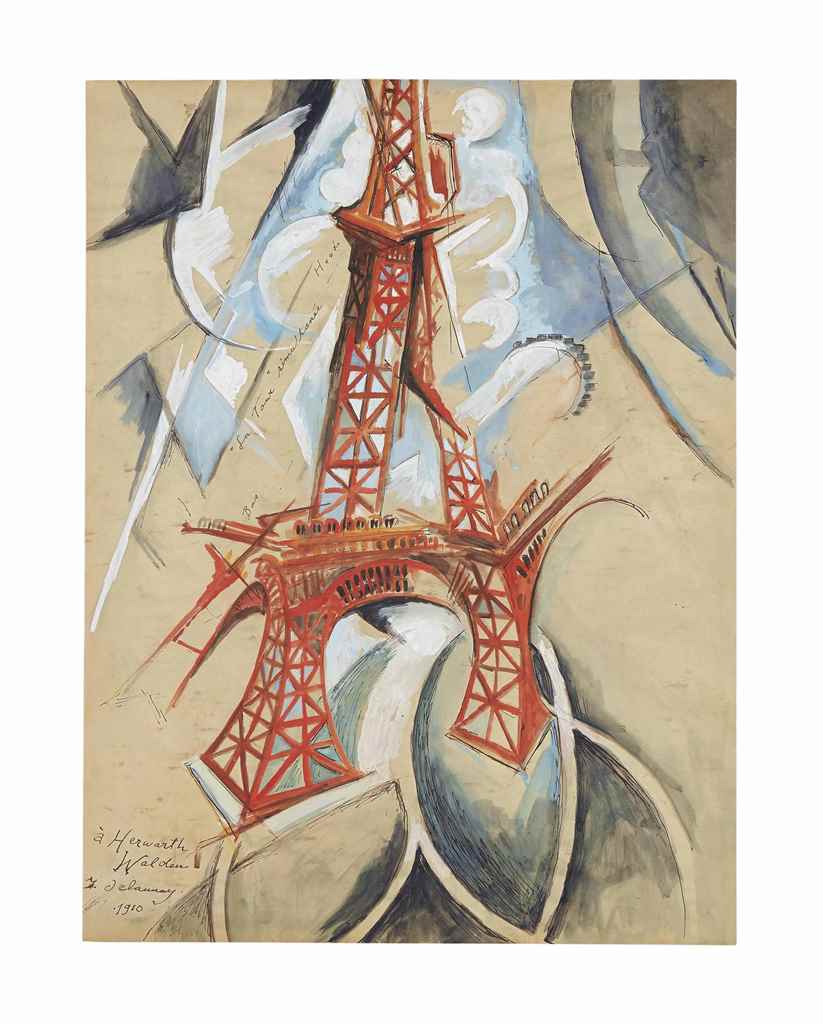
.jpg)


.jpg)
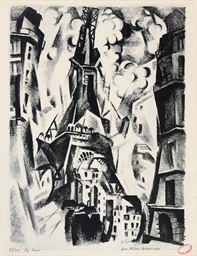
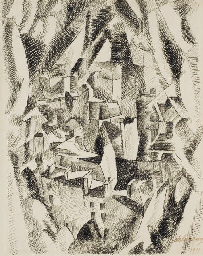
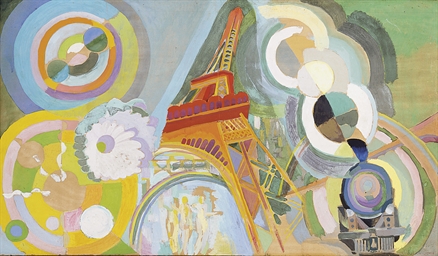
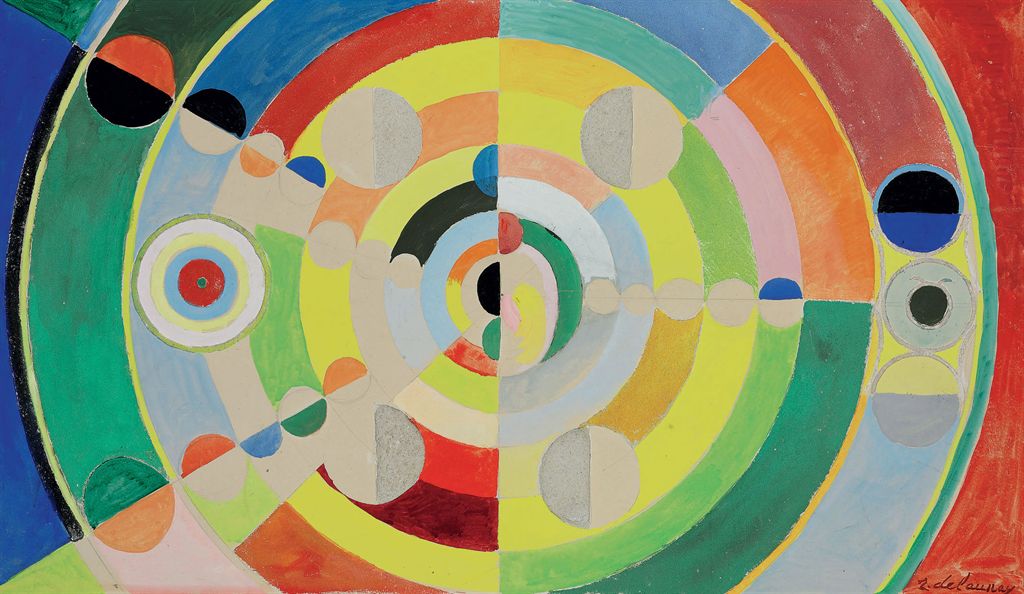
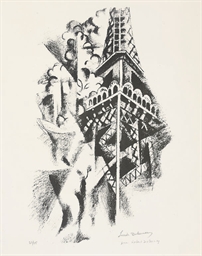
Testen Sie LotSearch und seine Premium-Features 7 Tage - ohne Kosten!
Lassen Sie sich automatisch über neue Objekte in kommenden Auktionen benachrichtigen.
Suchauftrag anlegen